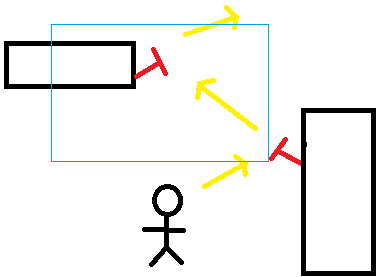I want to add springs in my game that work like the ones in sonic - i.e. if you can't get over an obstacle you have to hit a spring which sends the main character flying towards another spring that gets him over that obstacle. I drew a little diagram below to demonstrate what I mean (yellow arrows represent the direction the player will go towards and the red - are the springs).

In my Spring class I have created a method:
//The detection area (blue rectangle in the diagram)
public Rectangle broadPhaseDetection() {
broadPhaseRectangle = new Rectangle(getxPos() - broadPhaseLength, getyPos(),
broadPhaseLength, broadPhaseLength);
return broadPhaseRectangle;
}
If the Player collides with a Spring, I check to see if there's ANOTHER Spring within the blue area and if there is - calculate the vector that takes you towards that spring and send the player in that direction.
This seems like a very simple concept which has probably been done loads of times before, but I couldn't find any good examples online for some reason. Does anybody know how I can get the vector I need?
Any insight is highly appreciated, thanks.
